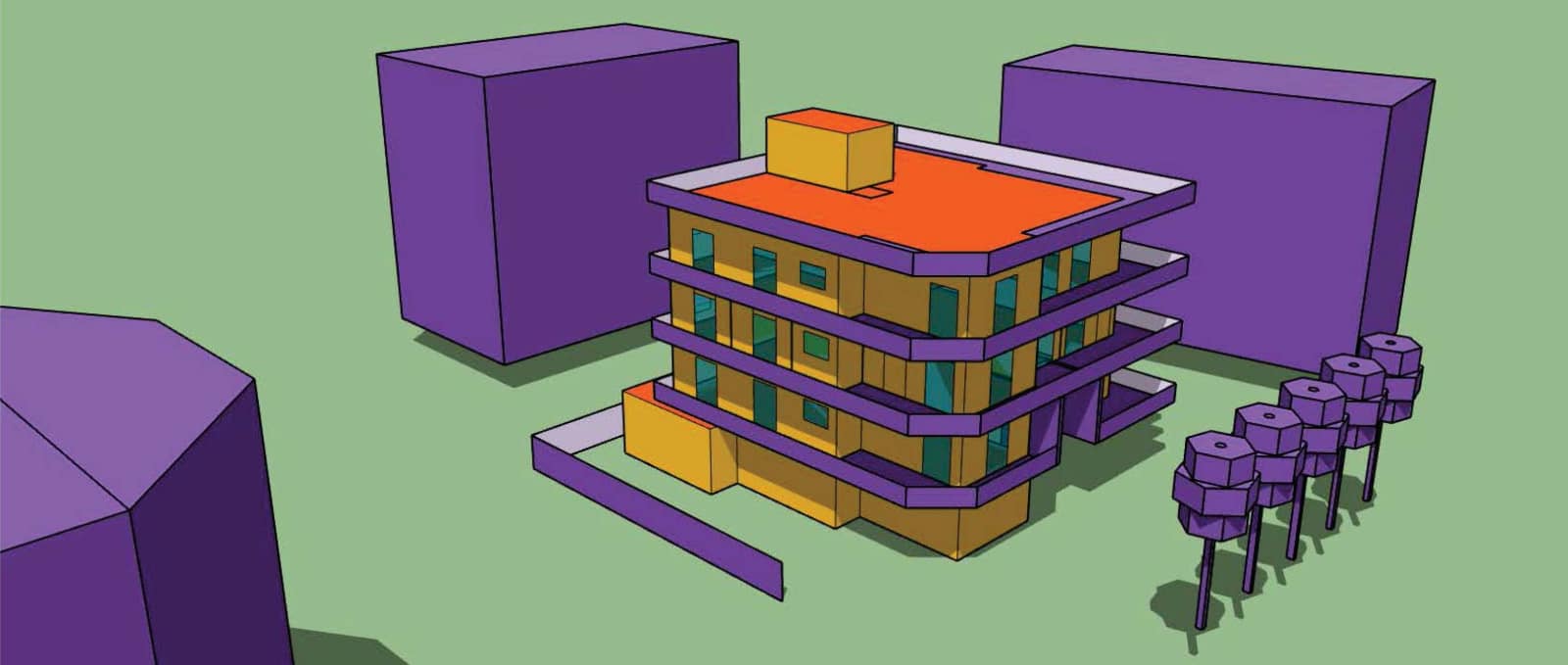Towards residential nZEB with off-site prefabricated hybrid façade systems using a variety of materials
Downloads
DOI:
https://doi.org/10.47982/jfde.2023.2.T2Keywords:
nZEB renovation, prefabricated wall, all-in-one façade kit, integrated HVAC component, TRNSYS simulationAbstract
Following the need of urban areas to maintain the existing building stock and simultaneously upgrade the overall energy performance, the renovation down-to-nZEB state has already become a necessity. In this regard, a vast range of prefabricated solutions have been developed lately. The main objective of such solutions would be not only to constitute an effective system to tackle building energy consumption but also to be versatile in terms of implementation and economic viability. In this regard, an adaptable off-site prefabricated envelope solution with an embodied HVAC system called “SmartWall” has been developed. The SmartWall can minimise thermal losses through the well-insulated envelope while, at the same time, its integrated HVAC system efficiently maintains indoor thermal comfort conditions. This study examines the virtual implementation of the SmartWall as a “Plug-n-Play” renovation solution to reach the nZEB state of a typical apartment in a multi-family residence in Athens. The analysis considers two SmartWall alternatives using conventional and eco-friendly materials. The results indicate a reduction of 88% in primary energy consumption without affecting thermal comfort conditions and highlighting that the nZEB state can be ensured if the SmartWall application is enhanced with photovoltaic modules.
How to Cite
Published
Issue
Section
License
Copyright (c) 2023 Emmanouil Katsigiannis, Petros Gerogiannis, Ioannis A. Atsonios, Aris Manolitsis, Maria Founti

This work is licensed under a Creative Commons Attribution 4.0 International License.
Authors or their institutions retain copyright to their publications without restrictions.
References
Arakawa Martins, L., Soebarto, V., & Williamson, T. (2022, January 1). A systematic review of personal thermal comfort models. Building and Environment. Elsevier Ltd. https://doi.org/10.1016/j.buildenv.2021.108502 DOI: https://doi.org/10.1016/j.buildenv.2021.108502
Attia, S., Eleftheriou, P., Xeni, F., Morlot, R., Ménézo, C., Kostopoulos, V., … Hidalgo-Betanzos, J. M. (2017). Overview and future challenges of nearly zero energy buildings (nZEB) design in Southern Europe. Energy and Buildings, 155, 439–458. https://doi.org/10.1016/j.enbuild.2017.09.043 DOI: https://doi.org/10.1016/j.enbuild.2017.09.043
D’Oca, S., Ferrante, A., Ferrer, C., Pernetti, R., Gralka, A., Sebastian, R., & Veld, P. op t. (2018). Technical, financial, and social barriers and challenges in deep building renovation: Integration of lessons learned from the H2020 cluster projects. Buildings, 8(12). https://doi.org/10.3390/buildings8120174 DOI: https://doi.org/10.3390/buildings8120174
Evola, G., Costanzo, V., Urso, A., Tardo, C., & Margani, G. (2022). Energy performance of a prefabricated timber-based retrofit solution applied to a pilot building in Southern Europe. Building and Environment, 222. https://doi.org/10.1016/j.buildenv.2022.109442 DOI: https://doi.org/10.1016/j.buildenv.2022.109442
Fiorentini, M., Cooper, P., & Ma, Z. (2015). Development and optimization of an innovative HVAC system with integrated PVT and PCM thermal storage for a net-zero energy retrofitted house. Energy and Buildings, 94, 21–32. https://doi.org/10.1016/j.enbuild.2015.02.018 DOI: https://doi.org/10.1016/j.enbuild.2015.02.018
Gilani, S. I. U. H., Khan, M. H., & Pao, W. (2015). Thermal Comfort Analysis of PMV Model Prediction in Air Conditioned and Naturally Ventilated Buildings. In Energy Procedia (Vol. 75, pp. 1373–1379). Elsevier Ltd. https://doi.org/10.1016/j.egypro.2015.07.218 DOI: https://doi.org/10.1016/j.egypro.2015.07.218
Katsigiannis, E., Gerogiannis, P. A., Atsonios, I., Bonou, A., Mandilaras, I., Georgi, A., … Founti, M. (2022). Energy assessment of a residential building renovated with a novel prefabricated envelope integrating HVAC components. In IOP Conference Series: Earth and Environmental Science (Vol. 1078). Institute of Physics. https://doi.org/10.1088/1755-1315/1078/1/012130 DOI: https://doi.org/10.1088/1755-1315/1078/1/012130
Mitra, D., Steinmetz, N., Chu, Y., & Cetin, K. S. (2020). Typical occupancy profiles and behaviors in residential buildings in the United States. Energy and Buildings, 210. https://doi.org/10.1016/j.enbuild.2019.109713 DOI: https://doi.org/10.1016/j.enbuild.2019.109713
Ochs, F., Siegele, D., Dermentzis, G., & Feist, W. (2015). Modelling, testing and optimization of a MVHR combined with a small-scale speed controlled exhaust air heat pump. Building Simulation Applications, 2015-Febru, 83–91.
Piaia, E., Turillazzi, B., Longo, D., Boeri, A., & Giulio, R. Di. (2019, November 29). Plug-and-Play and innovative process technologies (Mapping/ Modelling/Making/ Monitoring) in deep renovation interventions. TECHNE. Firenze University Press. https://doi.org/10.13128/techne-7533
Rovers, R., Zikmund, A., Lupišek, A., Borodinecs, A., Novák, E., Matoušková, E., … Ott, W. (2018). A Guide Into Renovation Package Concepts for Mass Retrofit of Different Types of Buildings With Prefabricated Elements for (n)ZEB Performance. Retrieved from http://www.more-connect.eu/wp-content/uploads/2018/12/A-GUIDE-INTO-RENOVATION-PACKAGE-CONCEPTS-FOR-MASS-RETROFIT-OF-DIFFERENT-TYPES-OF-BUILDINGS-WITH-PREFABRICATED-ELEMENTS-FOR-NZEB-PERFORMANCE.pdf
Sandberg, K., Orskaug, T., & Andersson, A. (2016). Prefabricated Wood Elements for Sustainable Renovation of Residential Building Façades. In Energy Procedia (Vol. 96, pp. 756–767). Elsevier Ltd. https://doi.org/10.1016/j.egypro.2016.09.138 DOI: https://doi.org/10.1016/j.egypro.2016.09.138
